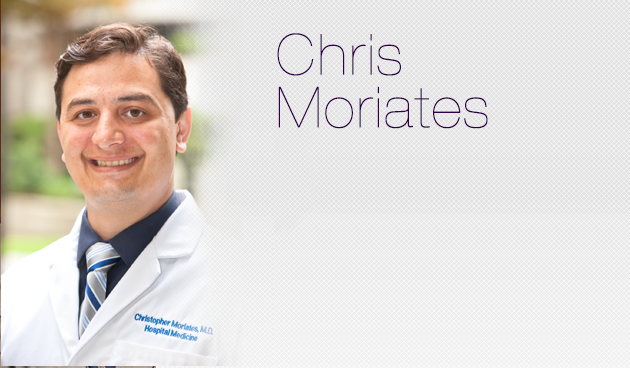By Chris Moriates, MD, SFHM and Vineet Arora, MD, MAPP, SFHM
At a movie premiere for the new Terrence Malick flick, “Song to Song”, Ryan Gosling, Michael Fassbender, and Rooney Mara walked the red carpet to flashing cameras and screaming fans in front of the famous Paramount Theatre in Austin. The next day, down the street, to a lot less fanfare, our Costs of Care team – Neel Shah and both of us – took the stage at the annual SXSW festival for own version of a premiere. We were about to step out of the normal medical conference crowd (i.e. no screaming fans but some with #pinksocks on) and see for the first time if videos we made depicting scenarios of doctors and patients confronting healthcare costs would translate to the real world. Would it work, or would the critics, like with the “Song to Song” premier, give us a rotten tomato?
Luckily, we had a very positive response, and our session was dubbed one of the most interactive on Twitter and even garnered a tremendously generous “Best Picture” nod from the healthcare round-up by Medical Marketing & Media (not exactly the Academy of Motion Picture Arts and Science, but we will take it!). In our first “public”-facing debut, it was clear that the public increasingly wants physicians to address costs of care with them – conversations that have been historically controversial. The patients in the room wanted to speak up and seemed to be looking for any invitation to do so. However, on the physician side of this physician-patient communication conundrum, we lack the useable scripts and examples to help scaffold these conversations.
To fill this void, we took a page out of the Institute for Healthcare Improvement (IHI) playbook. To address gaps in medical professional training around quality improvement and patient safety, IHI developed the IHI Open School platform, which could be accessed by any learner anywhere. Likewise, we decided to create freely available tools to introduce new skills about value conversations. In partnership with the ABIM Foundation, the University of Chicago and the Doctor’s Channel, we have launched the Value Conversations Series, which consists of 4 CME-approved, 15-minute video modules that model current shortfalls around value conversations and then provide examples of how to do better. Two of them target doctor-patient communication, and two of them target communicating about value with other clinicians.
We invite you to join us in Las Vegas at Hospital Medicine 2017 with the session, “Costly Conversations: Leading Conversations That Drive High-Value Care with Patients, Colleagues, and Supervisors” on Wednesday, May 3, where we will cover the topics from the series below.
The Costs of Care Value Conversations Series
Value Conversations with Patients
For the average American, out-of-pocket costs can be financially burdensome and have led to an increasing recognition that medical care can result in “financial harm”. This financial harm can lead to other negative downstream effects, such as patients avoiding future helpful medical tests, procedures, or therapies; an inability to participate in other health programs; or going without basic needs, such as food. In this module, we introduce a 3-step framework for identifying and considering your patients’ financial burdens.
Rising out-of-pocket drug costs can lead to medication underuse, resulting in poor disease management and costly complications. This module introduces strategies for decreasing out-of-pocket drug costs for patients using an evidence-based framework.
Value Conversations with Clinicians
This module uses the example of unnecessary lab draws on the day of discharge to illustrate how a simple conversation between a bedside nurse and a hospitalist team could have avoided a bad situation that seemed to unravel out of control.
Many of us can recall times where we had to respond to a supervisor who was asking us to do something for a patient that we did not necessarily agree with or a situation where the supervisor’s motivation was unclear. Watch this module to see what happens when you use a simple framework to engage supervisors and consultants in value conversations.
Our Costs of Care team will keep touring the country this spring to showcase the videos and hopefully spark value conversations along the way. And for those of you who may miss Vegas (and a lot of fun!), you can catch our team members at upcoming meetings, like the national SGIM and AAMC Integrating Quality conferences.
It is time for us all to start having conversations about value. So in this one instance, we hope whatever happens in Vegas does not stay in Vegas.



Leave A Comment